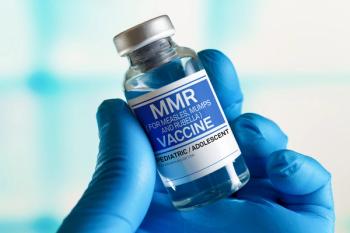
New Study Shows Drug Shortages Have a Large Impact on Hospitals
Drug shortages can adversely affect patient care in the community and hospital settings.
Drug shortages can adversely affect patient care in the community and hospital settings. They can occur for a variety of different reasons, including manufacturing and quality issues, delays, and discontinuations. Under the Food and Drug Administration (FDA) Safety and Innovation Act of 2012, pharmaceutical companies must report any potential issues to the FDA that could lead to drug shortages. Vizient, a health care performance improvement company, conducted a survey among its members to evaluate the financial and labor-related impact of drug shortages in the hospital setting.1
The survey included 365 participants across both acute and nonacute facilities, and the study was conducted March 6-April 4, 2019.2 The most common roles of the participants included director of pharmacy, pharmacy buyer, pharmacy manager, clinical coordinator, clinical pharmacist/specialist, supply chain leader, and vice president of pharmacy. The study found that 100% of the facilities surveyed were affected by drug shortages, and it’s estimated that hospitals spend an additional 8.6 million personnel hours annually managing the impact of drug shortages.2
It is estimated that drug shortages are costing facilities at least $359 million per year in labor costs for implementing mitigation strategies to improve patient care.2 The top 5 drug categories with drug shortages found to have the most impact on hospitals were controlled substances, local anesthetics, crash cart drugs, antibiotics, and electrolytes. Unfortunately, 38% of hospitals reported 1 or more drug shortage-related medication errors.2
This study provided important information regarding the impact of drug shortages in hospital settings. Since it was a survey, cause and effect cannot be determined but associations can be drawn for future research.
Pharmacists can play an important role in managing drug shortages across community and hospital settings. The ASHP and FDA websites include information on current drug shortages that pharmacists can review and send out to their colleagues on a regular basis. Drug shortages also span to the community setting, as there has been an ongoing shortage of the Zoster Vaccine Recombinant, Adjuvanted (Shingrix). Pharmacists have created waiting lists and helped to ensure that patients who have received the first dose of the vaccine are given priority for the second dose once the shipments arrive.
Guidance on the pharmacist’s role in managing drug shortages in the hospital setting have been established by ASHP, with the primary goal of promoting patient safety.3 Pharmacy departments should prepare for drug shortages by establishing the following: interdisciplinary drug shortages team, resource allocation committee, and processes for approving alternative therapies.
Once shortages occur, it is important to have a plan in place. The pharmacy team should contact product manufacturers, the FDA, and CDC to determine the cause of the shortage and anticipated time and duration. Patient prioritization may be necessary, and organizations such as the CDC may provide clinical guidance. Additionally, the interdisciplinary team should develop a protocol for patient prioritization using an evidence-based approach that includes clinical practice guidelines and original research.
Therapeutic alternatives should be assessed and added to hospital formularies through an expedited process. Hoarding medications and purchasing in advance of an anticipated shortage should be avoided since it can adversely affect the situation and prevent patients in need of obtaining the drug.3
References
- New Vizient Survey Finds Drug Shortages Cost Hospitals Just Under $360M Annually in Labor Expenses [news release]. Irving, TX; June 26, 2019: Vizient. https://newsroom.vizientinc.com/press-release/vizient/new-vizient-survey-finds-drug-shortages-cost-hospitals-just-under-360m-annuall. Accessed June 26, 2019.
- Kistner D, Kuper K, Kucera D, et al. Drug shortages and labor costs: measuring the hidden costs of drug shortages on U.S. hospitals. Vizient. https://newsroom.vizientinc.com/sites/vha.newshq.businesswire.com/files/doc_library/file/Drug_Shortages_Labor_Cost_Report_Vizient.pdf. Published June 26, 2019. Accessed June 26, 2019.
- Fox ER, McLaughlin MM. ASHP guidelines on managing drug product shortages. Am J Health Syst Pharm. 2018;15(21):1742-1750. doi: 10.2146/ajhp180441.
Newsletter
Stay informed on drug updates, treatment guidelines, and pharmacy practice trends—subscribe to Pharmacy Times for weekly clinical insights.














































































































































































































